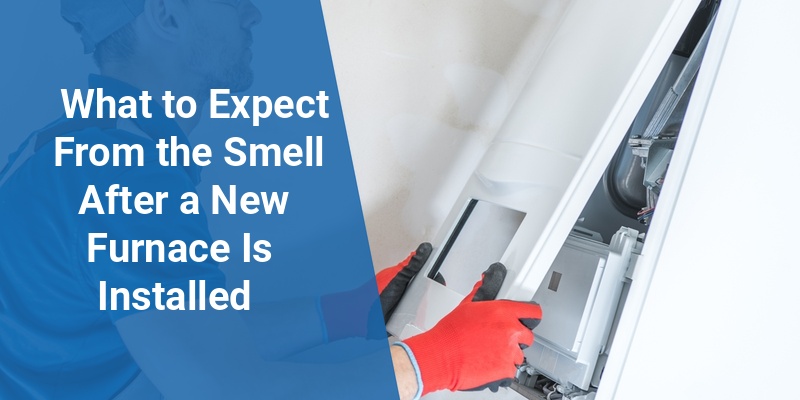After a new furnace installation, it is common to notice certain odors emanating from the system. These smells can vary from harmless burning smells to more concerning odors indicating potential issues. Understanding the causes of these smells, their typical duration, and when to seek professional help is essential for homeowners. This guide explores common odors experienced after furnace installation, their causes, and practical advice to ensure safe operation and indoor comfort.
| Smell Type | Cause | Duration | Actions |
|---|---|---|---|
| Burning Dust Odor | Dust burning off heating elements and ducts | 1-3 heating cycles | Run furnace to clear odor, ventilate the area |
| Chemical or Plastic Smell | Manufacturing residue, new furnace parts off-gassing | Few hours to a few days | Ventilate room, run system at low settings initially |
| Rotten Egg or Sulfur Smell | Natural gas leak or combustion issue | Persistent until fixed | Shut off furnace, call gas company immediately |
| Mildew or Musty Odor | Moisture buildup in ducts or near system | Ongoing until cleaned | Schedule duct cleaning and system inspection |
Common Smells After New Furnace Installation
Homeowners frequently report distinctive odors following the installation of a new furnace. The nature of these smells can help determine their source and whether they require immediate attention or will dissipate naturally.
Burning Dust or Debris Smell
One of the most typical smells is a light burning dust odor. This occurs when accumulated dust on heating elements or inside ducts burns off during initial use. This smell is harmless and normally fades after 1 to 3 heating cycles. Running the furnace for several hours can help clear residual dust faster.
New Furnace or Plastic-Like Smell
A faint chemical or plastic odor is common after furnace installation. Manufacturing residues and adhesives used on furnace components release fumes when heated for the first time. This smell may linger a few hours to a few days, especially if the system runs continuously. Proper ventilation and gradually increasing the heat setting can reduce this odor.
Gas or Sulfur Smell
Pay particular attention to any smell resembling rotten eggs or sulfur. This odor generally signals a natural gas leak or issue with combustion. If detected, the furnace should be immediately shut off and the gas utility company contacted as an emergency. Never ignore these signs due to potential health hazards and explosion risks.
Musty or Moldy Odors
Musty or mildew odors are less common but may occur if there is moisture buildup in ducts or near the furnace. This can happen due to condensation or poor ventilation. Persistent musty smells require professional duct cleaning and inspection to prevent mold growth and maintain indoor air quality.
Why Furnace Odors Occur After Installation
Several factors contribute to furnace odors right after installation. Understanding these can help homeowners assess when the smell is normal or signals a problem.
Call 888-906-9139 for Free Local HVAC Quotes – No Obligation, Just Savings!
Residual Construction Dust and Debris
During installation, dust and small debris often enter the furnace or ducts. When the system heats for the first time, this material burns off, producing a noticeable but safe odor.
Off-Gassing of New Materials
New furnaces contain various synthetic components, adhesives, and paint coatings. These materials release volatile organic compounds (VOCs) when heated, causing chemical-like scents during initial use.
Improper Combustion or Gas Leaks
If a furnace is not installed correctly or if gas supply connections have leaks, combustion may be inefficient, producing foul-smelling gases including sulfur-like odors. This is dangerous and requires immediate professional intervention.
How Long Does Furnace Smell Last After Installation?
The duration of furnace-related odors varies depending on the smell source and system usage.
- Burning Dust Smell: Usually disappears after 1-3 heating cycles once burned-off debris is cleared.
- New Furnace Off-Gassing: May last from a few hours up to several days, especially if ventilation is limited.
- Gas Leak or Combustion Smell: Persistent until the issue is professionally resolved. Never ignore.
- Musty Odors: Continuous until mold or moisture issues are addressed.
Steps to Minimize or Eliminate Unpleasant Furnace Odors
Homeowners can take several practical steps to reduce and prevent smells following a new furnace installation.
Ventilate Your Home Thoroughly
Open windows and doors to allow fresh air circulation. This dilutes odors caused by off-gassing or dust burning and speeds up odor dissipation.
Run the Furnace Regularly on Moderate Settings
Operating the furnace steadily for several hours helps burn off residual dust and new materials, reducing the initial smell faster.
Call 888-906-9139 for Free Local HVAC Quotes – No Obligation, Just Savings!
Schedule Professional Inspection and Cleaning
Have HVAC professionals inspect the installation, check for gas leaks, and clean ducts if necessary. Ensuring proper system function excludes combustion-related odors and mold problems.
Change the Air Filter
A clean air filter supports better airflow and indoor air quality. Replace the filter regularly, especially after installation, to reduce dust contribution to furnace odors.
When to Contact a Professional About Furnace Odors
While some odors are expected after installation, others require immediate attention to ensure safety and system performance.
- Persistent Burning Smells: Could indicate overheating or electrical issues needing professional diagnosis.
- Any Gas or Sulfur Odors: Always treat as emergency—leave the premises and notify the gas company.
- Musty Smells That Don’t Improve: May signal mold growth requiring duct cleaning and HVAC system maintenance.
Preventive Tips for Avoiding Smells After Furnace Installation
- Choose Certified HVAC Technicians: Proper installation reduces risks of leaks and poor combustion.
- Pre-Clean Air Ducts: Scheduling duct cleaning before installation can reduce dust residue.
- Use Activated Carbon Air Filters: To trap odors and improve indoor air quality.
- Maintain Regular HVAC Service: Annual inspection and cleaning prevent odor-causing problems.
